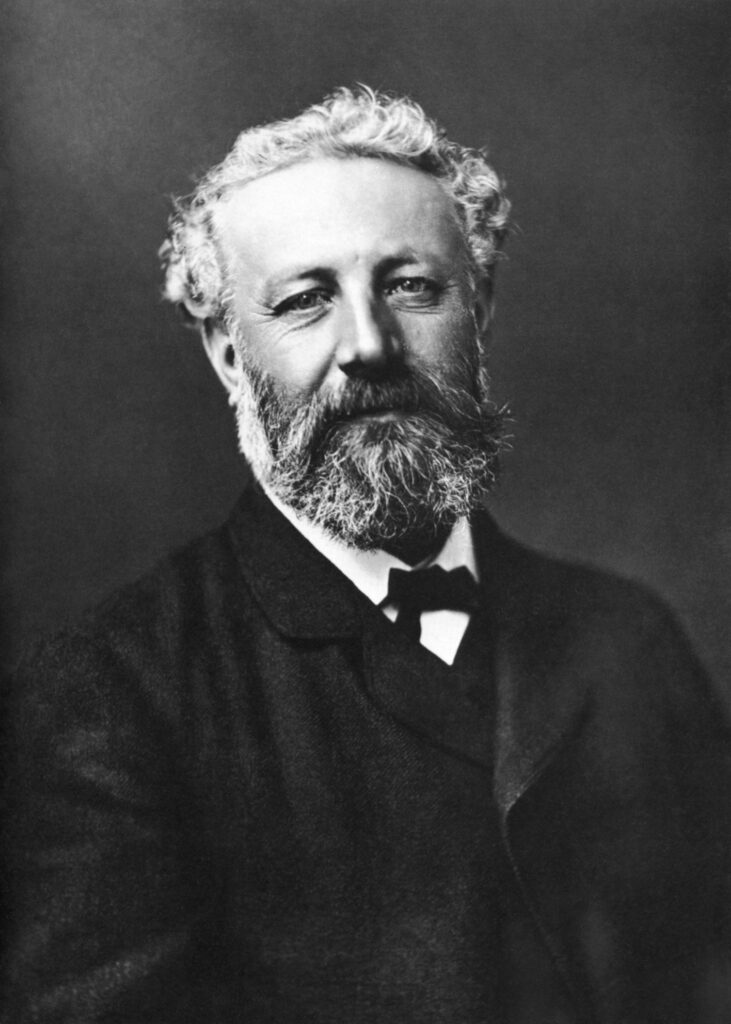Jules Gabriel Verne was born on February 8, 1828, in Nantes, France. In 1847, he was sent to Paris to begin his studies in law school, graduating four years later. By 1849, he began to write plays and novellas, and in 1852, abandoned the practice of law. Verne published From the Earth to the Moon in 1865, Twenty Thousand Leagues Under the Sea in 1869, and Around the World in Eighty Days in 1872. These and other works (especially his plays) made him very wealthy. His later works of note include Robur the Conqueror in 1886. Two years later, Verne entered politics and was elected town councilor of Amiens, where he lived most of his life. He died there, from diabetes, on March 24, 1905. The relationship between Verne’s writings and science fiction is complex. Verne, like H. G. Wells, is frequently cited as one of the founders of the genre, and his profound influence on its development is indisputable. Verne himself argued repeatedly in interviews that his novels were not meant to be read as scientific.
The pioneering submarine designer Simon Lake credited his inspiration to Twenty Thousand Leagues Under the Sea, and the early aviator Alberto Santos-Dumont named Verne as his favorite author and the inspiration for his own elaborate flying machines. Igor Sikorsky often quoted Verne and cited his Robur the Conqueror as the inspiration for his invention of the first successful helicopter. Verne’s From the Earth to the Moon inspired many budding scientists, including Konstantin Tsiolkovsky, Robert Goddard, and Hermann Oberth.
In his youth, Edwin Hubble, the American astronomer, was fascinated by Verne’s novels, especially From the Earth to the Moon and Twenty Thousand Leagues Under the Sea. Their influence was so strong that, like Verne, Hubble gave up the career path in law that his father intended for him, and instead pursued his passion for science. Other scientific figures known to have been influenced by Verne include Wernher von Braun, Guglielmo Marconi, and Yuri Gagarin. Authors such as Arthur C. Clarke and Ray Bradbury both cited Verne as the main influence on their own fiction.
In 1961, a large impact crater on the far side of the Moon was named Jules Verne in tribute to the writer. In 1999, the Science Fiction and Fantasy Hall of Fame inducted Verne citing him for having “helped shape and found modern science fiction.” In 2008, the European Space Agency launched an unmanned resupply spacecraft, the Jules Verne ATV, on a resupply mission to the International Space Station. In homage to Verne’s astronomical writings, the craft carried two handwritten pages from Verne’s files as well as editions of From the Earth to the Moon and Around the Moon.

